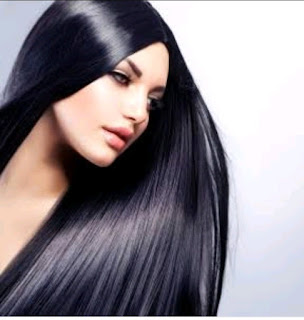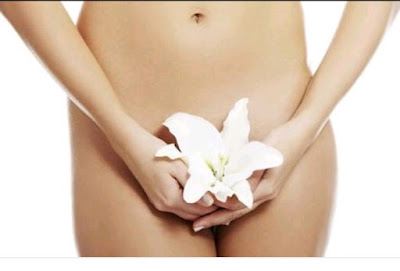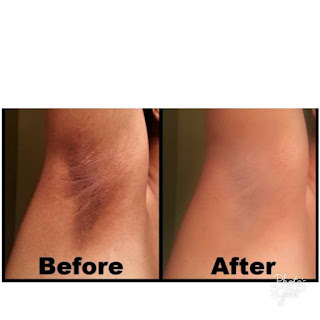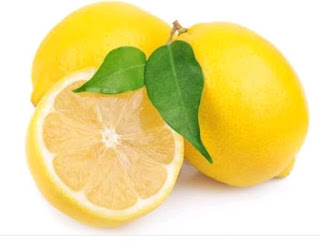LEARN THE SIX(6) PROCESS FOR PROPER HAIR CARE
How often should you wash your hair? It's the perennial question of the hair industry and but experts seem to agree that cutting back is a good thing - and washing every day is a mistake, no matter how much you might crave clean-feeling locks.
"Your hair's natural oils are designed to condition and protect your tresses, so when you shampoo daily, it strips these vital oils away," explains New York-based hair stylist Dan Sharp, whose clients include Kate Winslet, Hilary Swank and Charlize Theron.
"It creates a vicious cycle of over-production of oils and a need to shampoo very often. Ideally, to keep your hair healthy, you only need to wash two to three times a week, max."
Don't overwash coloured hair
This is especially true for coloured hair, which can lose its sheen quickly with too much washing.
"The biggest mistake people make is over-washing coloured hair," says colourist Tracey Cunningham, the woman behind Gwyneth Paltrow’s icy blonde hue.
"Buy a good-quality shampoo – Pureology ones are great – and wash it every few days using styling products in between to keep it looking fresh."
"I shampoo just once or twice a week," agrees Naomi Watts' hair stylist Marie Robinson. "Don't shampoo daily. Simply rinse and condition the hair every other day as shampoo can wash out the colour."
Take into account your hair type and lifestyle choices
Of course, how often you need to wash your locks also depends on the type of hair you have.
"Your hairdresser can advise how often you should be washing – it depends on how active your scalp is in producing oil," says Tom Gallagher, creative director at the award-winning Oribe Hair Care.
"The curlier your hair is, the longer you can go between washes," explains dermatologist Dr. Doris Day. "The straighter it is, the faster the oil wicks down, so that can make it oilier faster. If you have superstraight hair, you may not be able to go more than two days without washing."
And lifestyle choices like going to the gym may also affect how often you shampoo your tresses. But even here, there are ways of cutting back - you could try simply rinsing your hair rather than adding in shampoo.
"You may not be able to imagine not washing your hair after a workout (we totally get that), but you can can always rinse out sweat without shampooing," says hair stylist Kerrie Urban. "A water-only rinse will remove salt and sweat without stripping hair oils."
Invest in some good dry shampoo
And finally if you're aiming to scale back the amount of times you wash your hair per week, remember dry shampoo is your friend.
"Use dry shampoo instead of washing your hair every day. It will help reduce the oil build up in your hair and gives amazing texture," says stylist Mark Townsend, who tends to Reese Witherspoon's hair. "You can also leave dry shampoo in (instead of brushing it out) to give volume."
"As opposed to washing your hair every day, dry shampoo will help to refresh your hair at the roots and the tips whilst helping you to retain all the essential moisture your hair needs," agrees hair visionary Luke Hersheson of the Hershesons empire.
2. Avoid hot showers and shampoo your scalp, not your ends
Come shampoo time, many of us reach for a large dollop of the good stuff to scrunch into our hair; but there's a technique to good hair washing and overdoing things on the product front will do more harm than good.
"Healthy, beautiful, shiny hair starts in the shower so make sure to use the right shampoo and conditioner for your hair type and level of damage," says Mark Townsend.
"The volume of shampoo you should use depends on the length and thickness of your hair, but a blob the size of a 20p coin is a good start," says Michael Lendon, advanced creative director at Aveda. "Longer hair needs a 50p-size dollop."
Aim for the scalp not the ends
It's not just how much shampoo you use, but where you apply it that counts.
"Use shampoo on the scalp only - not on the ends of your hair. The shampoo will rinse down in the shower, but you don’t want to scrub the ends," says Kerrie Urban.
Massage your scalp to encourage circulation
"Giving your head an invigorating massage as you shampoo is a good way to encourage blood circulation and helps to detoxify the scalp," notes Aveda's Michael Lendon.
Oribe's Tom Gallagher agrees: "Having strong, healthy hair is the best way to make any hair look expensive. A lot of it is about properly shampooing and conditioning and taking care of your scalp - massage it well while washing to get circulation going."
Avoid hot water
"Cool off in the shower," says Brian Phillips, founder of Canada's World Salon. "Blasting your scalp with extremely hot water will dry out your hair and create tangles that could result in breakage."
3. Towel-dry your hair before applying conditioner
What conditioner you use and how you use it is, if anything, more important than the shampoo stage. Make sure you invest in a few good quality conditioners and leave-in treatments or hair masks, especially if you have coloured hair.
"Invest in your colour at home," says stylist Tracey Cunningham. "Gwyneth’s hair is in such good condition because she regularly uses at-home treatments. People are cheap with what they use on hair but don’t treat their cashmere jumper that way."
Good conditioner is also crucial when it comes to thick, curly hair.
"For curly, highly textured hair, always deep condition," says celebrity hair stylist Ted Gibson, who tends to Lupita Nyong'o's hair. "No two minute conditioners here. Deep conditioning involves a conditioner that will add moisture and strength (protein) back to hair. You should use heat by either applying conditioner to hair while taking a shower and let it sit while showering or by covering the hair with a plastic cap and applying heat from an outside like a hair dryer.
"I believe it’s important to use leave-in conditioners and also not to shampoo it so often. Rinse it if you want to but don’t necessarily shampoo it."
Gently towel-dry the hair before applying conditioner
"Make sure you towel-dry hair after shampooing and before you apply conditioner: excess water in your hair means the conditioner won't be able to penetrate the hair shaft and deliver the necessary moisture to keep hair looking healthy and shiny," advises industry legend Charles Worthington.
If you're short on time, at least squeeze out excess water - "hair that’s saturated with water doesn’t have room to absorb anything else," he says.
Avoid the roots and concentrate on the ends
"Try not to put the conditioner on the roots, because that can cause your scalp to get greasy faster," says stylist Kerrie Urban.
It's also a good idea to think ahead and anticipate situations where your hair might dry out.
"While you exercise, you perspire, which means that your hair gets damp with sweat that can actually make it dry," says famed LA-based hair styling talent Andy LeCompte. "Before you hit the gym (especially during the summer, but this works year-round too) wet your hair and add in some conditioner from the mid-lengths to the ends. Rinse out the conditioner post-workout and you’ll be left with shiny, hydrated hair."
"Avoiding too much sun helps too," notes colourist Marie Robinson, on the topic of hydrated hair.
4. Brush your hair twice a day, from the bottom up
Healthy hair needs regular brushing but don't tear through your locks mindlessly.
"For perfectly shiny, healthy and untangled hair, you need to brush your hair twice a day, " says stylist Laura Superbi of iconic French hair salon Jean Louis David. "Once in the morning and once before going to bed, for about a minute each time."
"Don't be rough with your hair: treat it nicely and it will repay you by looking healthy and shiny," cautions Michael Lendon of Aveda.
Comb wet hair, don't brush it
"When your hair is soaking wet, it is weaker, fragile and more susceptible to breakage," says NewBeauty editor Anna Jimenez. "Try not to rough-dry hair with a towel, and instead gently press the water out. Also, do not brush your hair while it is wet. Use a wide-tooth comb, working from the ends of your hair on up."
Brush from the bottom up
"Brushing from the roots causes damage – always brush from the bottom and work up," advises Tracey Cunningham.
Use different brushes for blow-dying and styling
"At home, you should have a round brush for blow-drying, a Mason Pearson brush for styling and a tail comb to move hair around a little," says celebrated hair stylist and darling of the fashion world, Guido Palau.
Keep your brushes clean
According to Anna Jimenez, "Filthy hair brushes that are covered in hair, oil and product build-up are breeding grounds for bacteria. Clean them at least once a month with a mixture of baking soda and lukewarm water. A toothbrush will help you to get into all those tiny bristles."
Laura Superbi is of a similar mind: "To make sure your hairbrush lasts, look after it. Do this by regularly removing all of the hair that gets stuck in the brush. Clean once a month with warm water and a small amount of shampoo."
5. Use a low-heat setting for hairdrying and point the nozzle down, not side-on
As a general rule of thumb, one of the worst things you can do for your hair is overheat it with excessive blow drying. If you want to avoid dry and damaged locks, you need to either rein in how often you use a hairdryer or pay attention to how you're using it and take care to apply heat protection products beforehand.
Cut back on heat-styling tools
"Don't use heat-styling tools daily. Flat irons, curling irons and even blow drying can damage the hair shaft. Damaged hair is not able to retain colour the way that healthy hair can," says colourist Marie Robinson.
"I almost never blow-dry my hair or use hot tools," she adds. "I usually apply Oribe Dry Texturizing Spray, go to bed with damp hair, and wake up with waves."
You can also bypass hot tools by multitasking your hair style, as celebrity stylist Dan Sharp explains:
"Styling doesn’t always have to involve a hot tool. If you give yourself a fierce blowout on Monday, rock it out on Tuesday and on Wed do a fab high ponytail. Making your style last a few days will really help prevent damage."
Use protective treatments
Hair guru Nicky Clarke recommends "always using protective styling products before blow-drying.
"Add a pea-size amount of Nicky Clarke Instant Calmer from the mid-levels to the ends of your hair to seal in moisture and smooth the cuticles down before you head out into the cold," he says.
"Do use leave-in treatments to blow dry your hair, it will protect and moisturise your hair every day," says Alex Brownsell of hip UK hair label Bleach.
"Always use a heat-protector spray, such as Aveda's Brilliant Damage Control spray (£16 RRP)," adds Michael Lendon of Aveda.
Wait before blow-drying your hair and use lower heat settings
"Try not to blow-dry your hair immediately after shampooing," says Anna Jimenez. "Ideally, you should allow your hair to first dry for 15 minutes under a towel turban. This saves effort and also cuts down on the hair exposure to the blow-dryer.
"If at all possible, don't use the high heat settings of your blow-dryer. The air stream should feel comfortable on the back of your hand."
Keep the dryer at a distance your hair
"You should always be careful with heat, but this is especially true if your hair is thinning. Keep the hairdryer nozzle two inches away from your hair," says Michael Lendon.
"The nozzle should be pointed straight down, about three inches away from the hair, which, admittedly, isn't easy to do yourself," explains Julia Robert's hair stylist Serge Normant. "Most people come at their heads from the side, which makes hair frizzy and staticky by pushing it all over the place."
Move your hair around
You need a bit of movement for the ideal blow-dry, as hair care expert Harry Josh explains:
"The perfect the at-home blow-out- it’s not as hard as it sounds. Start by flipping your head upside down, and shake your hair around while you blow-dry - the more you move, the more volume you’ll get. Once it’s about 80 percent dry, flip back up and blow-dry hair in sections to smooth, focusing on polished ends. The last three inches are key: Move your brush and dryer right down to the very end of the strands and take your time. It will make all the difference."
Schwarzkopf hair stylist Armin Morbach notes: "You should keep the blow-dryer moving constantly to avoid applying too much heat in a single spot. We recommend dividing the hair in several portions and securing the strands with large hair clips or grips.
"Work your way up blow-drying your hair from the neckline to the crown of your head so that you don't hit the same strand of hair multiple times."
Nicky Clarke adds, "Whilst blast drying your hair, for more fullness, remove the nozzle and direct the dryer towards the roots whilst lifting hair away. To keep hair flatter, use a nozzle to follow the shape of your head and move your hair around with a comb."
6. Try castor oil, hair oil and dry shampoo
Every hair stylist has a secret arsenal of favourite products to give your hair that extra dose of va-va-voom. Here, some of the world's leading experts share their star formulas...
Stylist Andy LeCompte is a big fan of hair oil: "Just like applying facial oil can help regulate oil production on your skin, hair oil can do the same for your scalp. There’s no need to go crazy with applying oil, but don’t be afraid to use oil if you have oily hair. It’ll actually help to regulate how oily your scalp is, because your hair won’t feel as though it needs to naturally overcompensate for dryness."
Guido Palau can't get enough of hairspray:
"Hairspray is to hair what salt and pepper are to food. Once sprayed, you’re finished.
"Yes, it can be sticky and overwhelming, but find a medium-hold hairspray to start with and spray it into your hands and then run your hands through your hair to smooth down the frizz.
"You need a bit of hairspray for any updo you are trying to achieve, so just start lightly with the spray."
Celebrity stylist Serge Normant is an advocate of castor oil:
"With a tiny drop of castor oil plus dry shampoo, hair has a two-days-after-shampooing feel. It's also a great, nourishing scalp conditioner, especially for African-American hair, which can be thin and brittle.
"I mostly use it on shoots, though, applying it very sparingly as an allover pomade to give extra shine under the lights."
And as for Daniel Galvin, he plumps for good old Kerastase: "The Kerastase Chroma Reflect Masque is a fantastic way to keep your hair nourished and to maintain the colour for longer."











Comments
Post a Comment